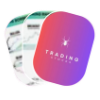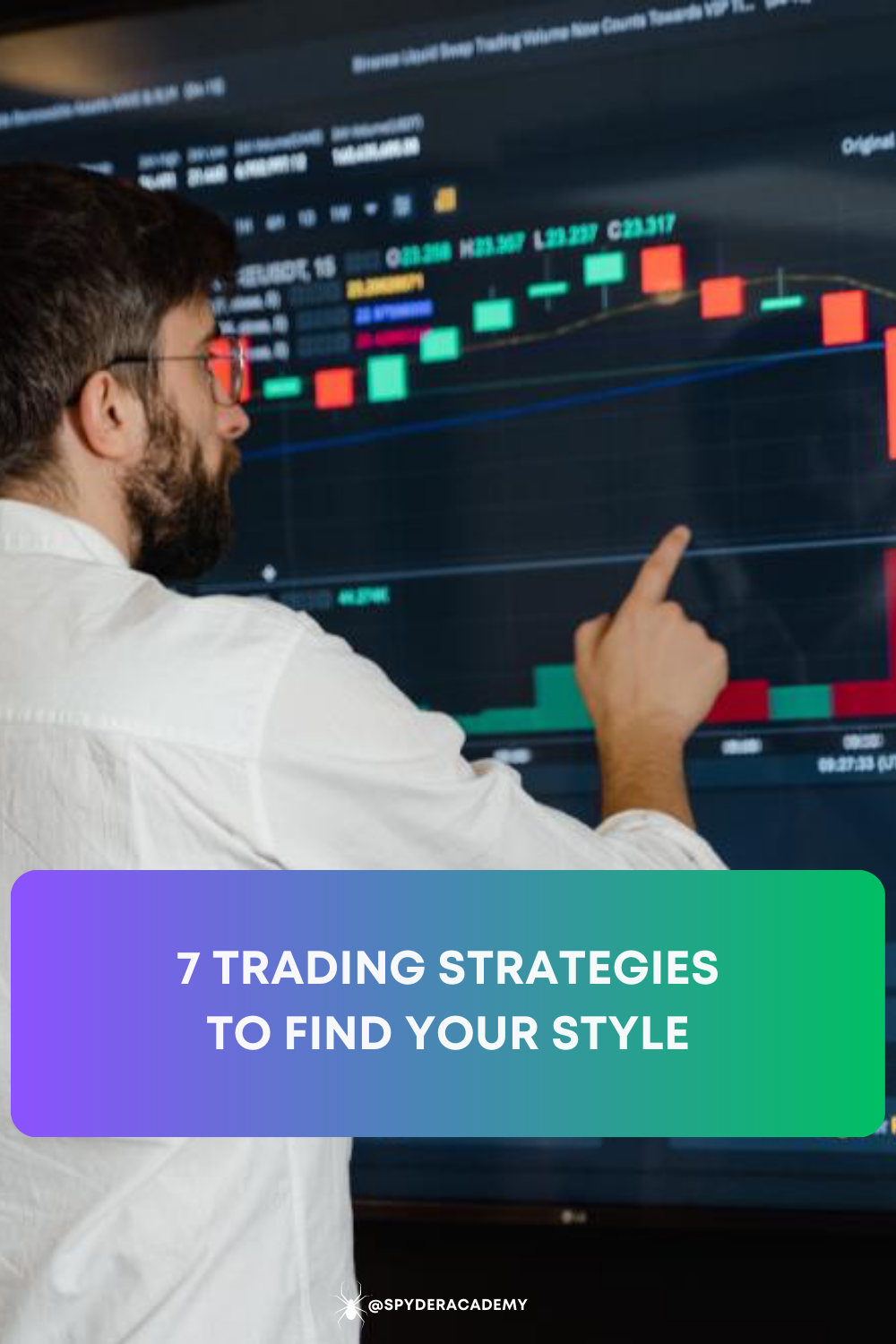There are various styles and strategies that traders use, which are usually based on their risk tolerance, time commitment, and profit goals. Below, we’ll explore some of the most common ones.
Day Trading
Day traders buy and sell securities within a single day, attempting to capitalize on short-term price movements. It’s a full-time job as it requires continuous monitoring of the markets and quick decision-making. Day trading strategies often involve technical analysis and high-volume trading.
At Spyder Academy, our traders use a variety of trading strategies every day. As you start your trading journey, it is always a good idea to find a strategy that fits your personal style. Experiment. Once you find success with a particular strategy, refine it until it becomes muscle memory. Then as you look to find improvements to your trading, you can start to incorporate other trading strategies alongside your main trading strategy.
Swing Trading
Swing traders take advantage of ‘swings’ in the prices of assets. They typically hold positions for a period of days to weeks, aiming to profit from short- to medium-term price patterns. Swing trading combines elements of day trading and trend trading, focusing on momentum and using technical analysis to identify trading opportunities.
Scalping
Scalping is a high-speed trading strategy that involves making many small-profit trades rather than waiting for a single trade to develop a larger profit. Scalpers often trade in and out of a stock within minutes, or even seconds, aiming to take advantage of quick price changes.
Momentum Trading
Momentum traders focus on stocks that are moving significantly in one direction on high volume. They take short-term positions to take advantage of momentum in the stock’s price.
High-Frequency Trading (HFT)
High-frequency trading is an automated trading platform that large investment banks, hedge funds, and institutional investors employ. It uses powerful computers to transact a large number of orders at extremely high speeds. These high-frequency trading platforms allow traders to execute millions of orders and scan multiple markets and exchanges in a matter of seconds, thus giving institutions that use the platforms a huge advantage in the open market.
Algorithmic Trading
Algorithmic trading uses a computer program that follows a defined set of instructions (an algorithm) to place a trade. The trades, in theory, can generate profits at a speed and frequency that is impossible for a human trader.
News-Based Trading
Traders using this strategy will closely follow news releases, and place trades based on how they believe the market will respond to this news.
Each trading style has its own set of risks and rewards and requires a different skill set and approach. When choosing a trading style, individuals should consider their personal goals, risk tolerance, and the amount of time they can devote to trading. It’s always a good idea to practice a trading strategy before implementing it, to understand how it works in different market conditions.




